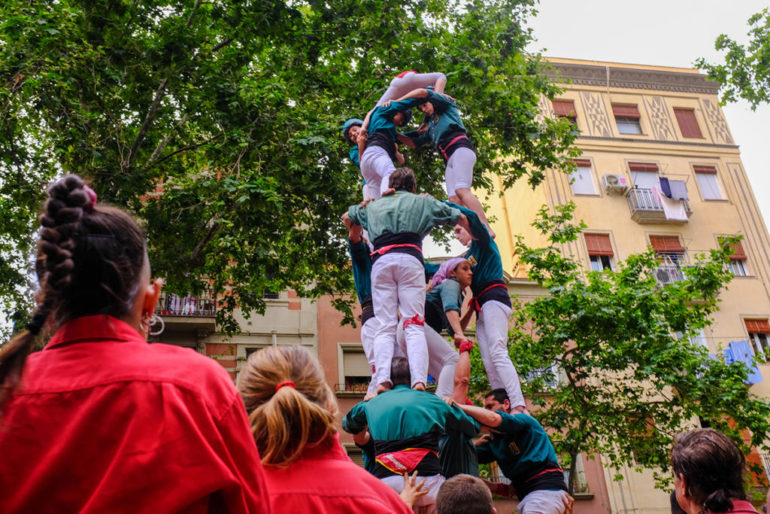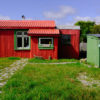Barcelona has amazing buildings, thanks to architects like Gaudi. But there’s another, more nerve-wracking form of architecture you should witness: human towers. Here’s our experience watching a show.
We found ourselves in a dense crowd by La Barceloneta beach, watching stocky, uniformed people gathering into a ring. They all tightly gripped each others’ bodies and lowered their heads, creating what looked like a platform. A few new people climbed barefoot on top of them to form another ring, and immediately they were supported by a set of hands. One by one, we were watching a tower rise before our eyes, and people were the building blocks.
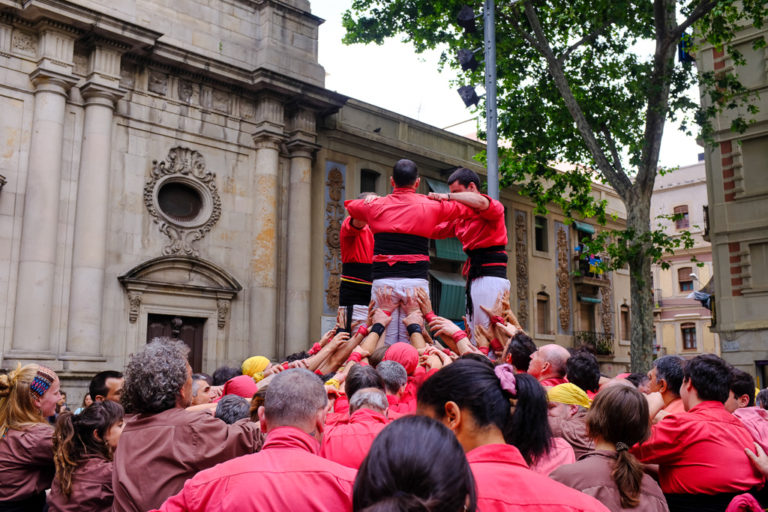
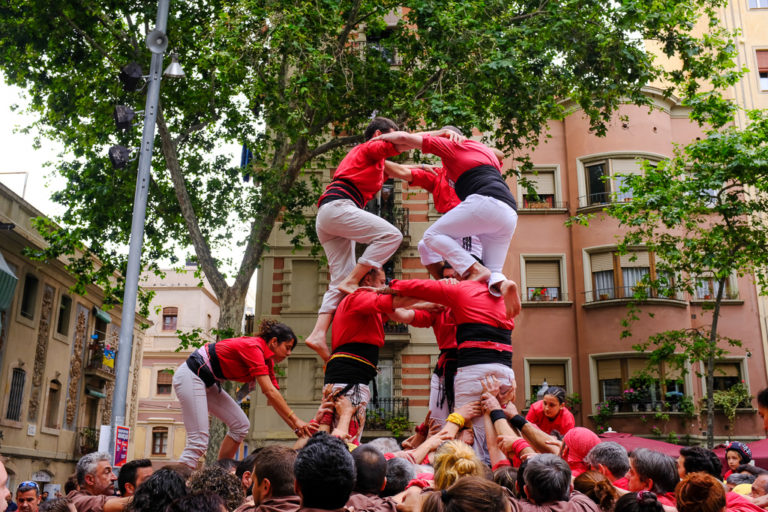
At the base, a man wearing a yellow bandana shouted instructions and reminders. Though I couldn’t understand the language, he seemed to be performing the role of a coach or coxswain.
With each additional tier of humans, we could see the tower participants trembling with the weight they were supporting. I realized that the human base for each tower acts not only as a foundation, but also as a safety net to catch people if they fall.
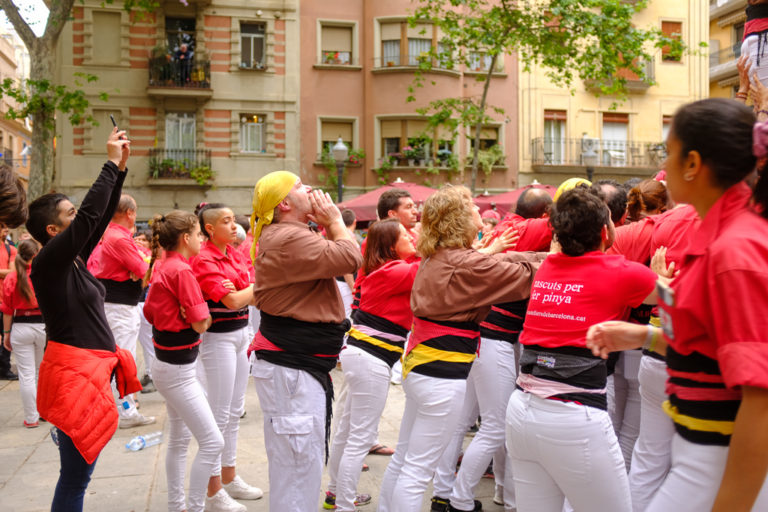
After the tower had grown several layers high, a tiny girl with a foam-padded helmet scrambled her way up the bodies. When she reached the top, she raised her arms in triumph and saluted the crowd, listening to the sound of blaring trumpets and relieved clapping from the audience beneath her.
Then, the child descended and the tower slowly disassembled, taking themselves apart just as methodically as they had put themselves together.
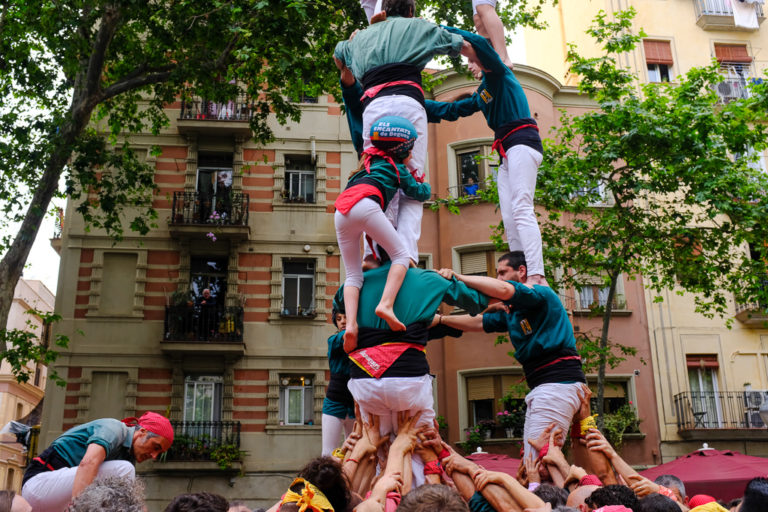
These human towers are called castells, which mean “castles” in Catalonian. The performances typically take place at festivals and draw huge, diverse crowds.
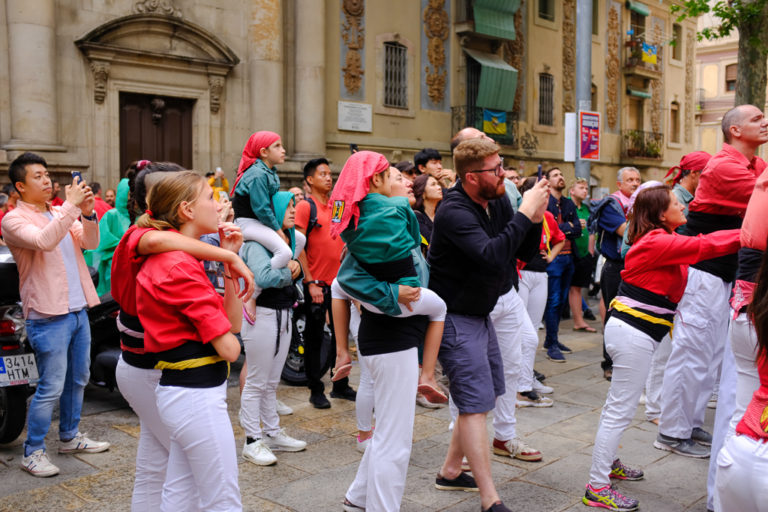
As an audience member, I felt like it was a nerve-wracking experience, especially since only kids are light enough to climb to the top. Though there have been few reported accidents in the history of the castellers and all the participants had endured countless hours of training, it made me feel nervous watching the children mentally preparing themselves before they begin their ascent.
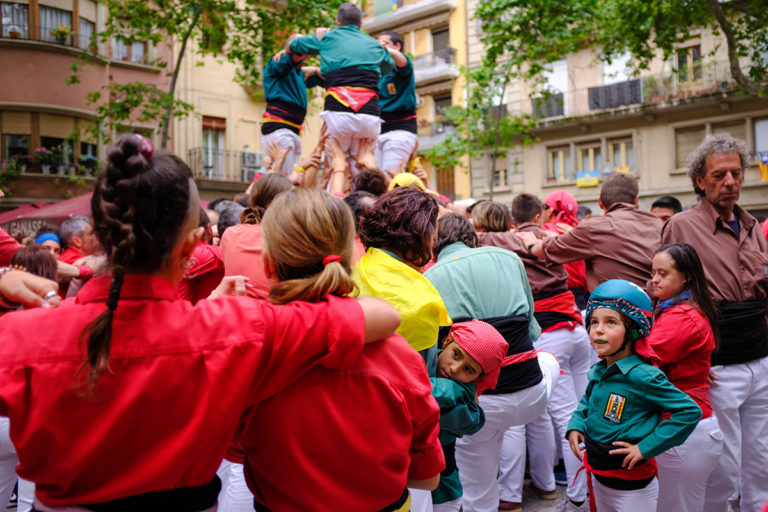
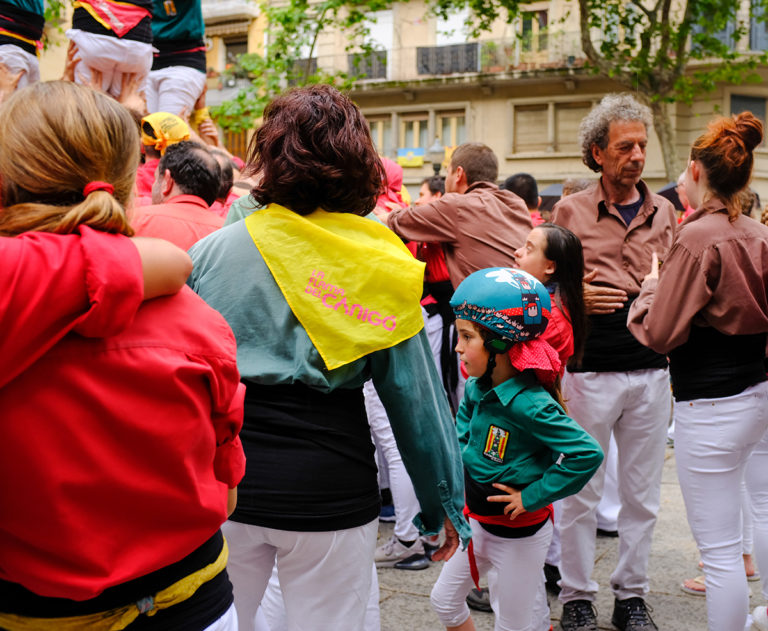
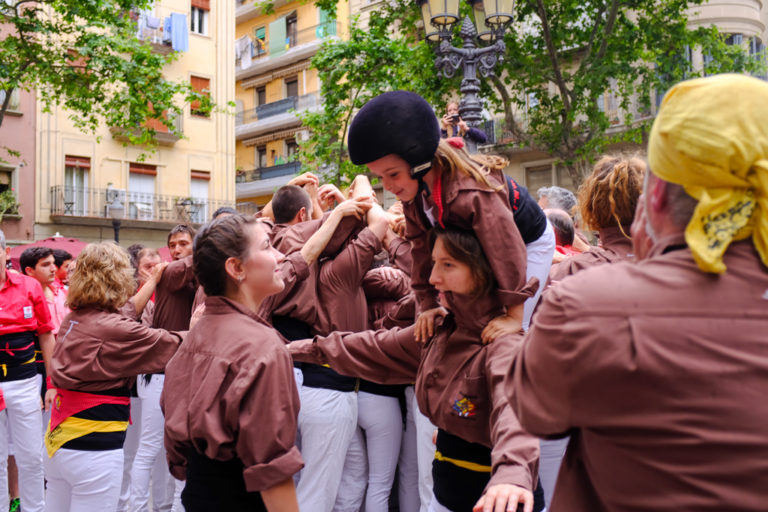
However, it was also inspiring to see how seriously everyone takes their role. Though they break into smiles and excited conversation after they accomplish their task, they are stone faced and calm as they prepare to climb. Before the tower activity begins, the castellers secure black sashes around themselves, which both support their own lower back and act as footholds and handholds for other climbers.
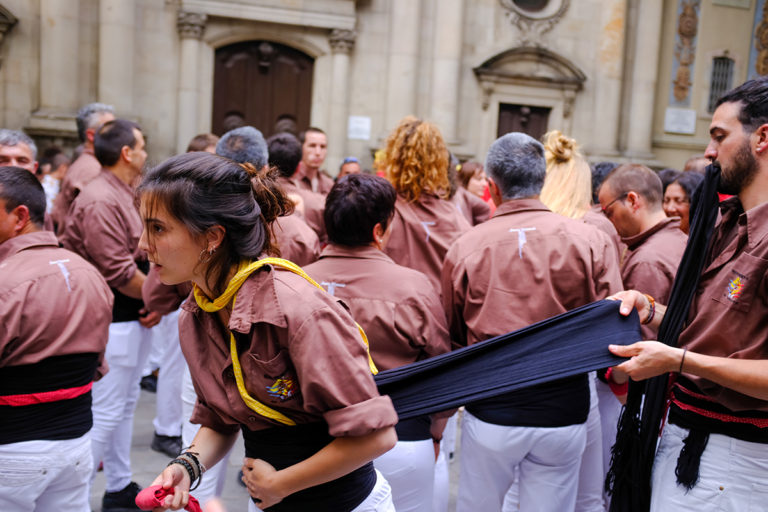
The record height for human towers is 10 levels of people, which was achieved in 2015. That’s pretty impressive, considering how many factors come into play. During the performance we watched, there was a light drizzle, and there were several attempts where the castellers had to prematurely deconstruct their tower because it didn’t feel stable enough.
To create a human tower requires such a strong sense of strength, balance, and courage—but most of all, trust in one another. There was a sense of community, an infectious team spirit in the air, even as people were gritting their teeth and sweating from all the weight they were supporting. After the castellers finished their performance, you could see just how supportive everyone is of each other, even passing their own babies around the crowd without a degree of wariness. It was inspiring to see humans coming together to achieve something so unimaginable, and a great case study for team-building and designing unconventional structures.

